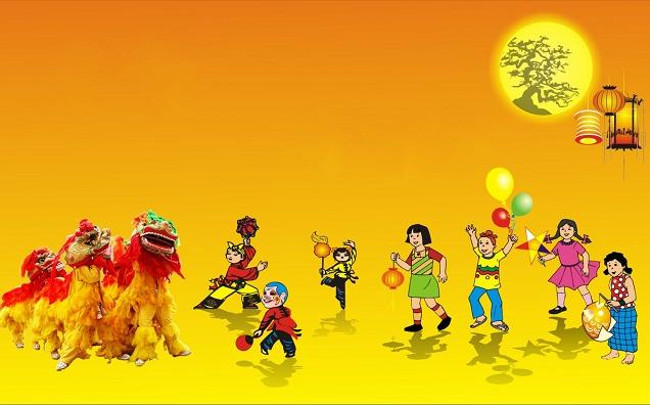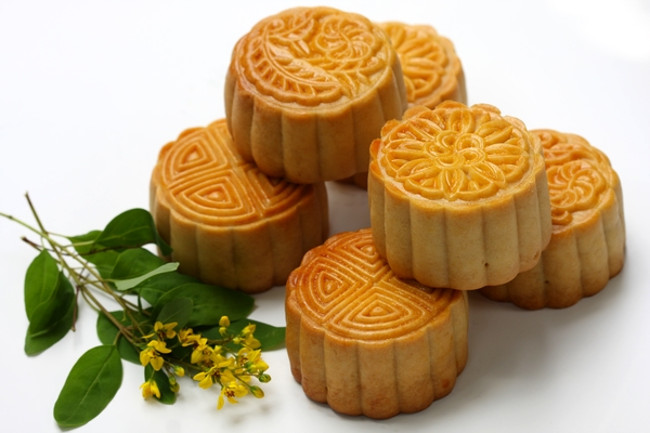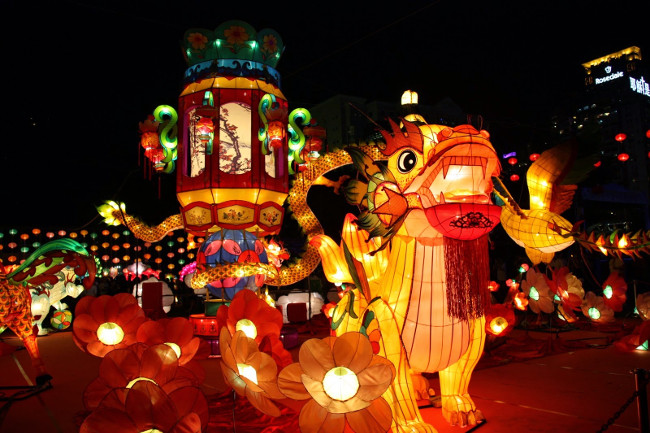Origin, customs and meaning of the Mid-Autumn Festival
The Mid-Autumn Festival has a history of thousands of years, and takes place on the 15th day of the 8th lunar month. This day has become a new year for children and Tet of all families, and is also known as Lunar New Year, Lunar New Year .
On this Tet holiday, children will pick up his lamp, watch lion dance, sing. Many houses often organize displays, looking for moon. As a custom, children enjoying fruit candies during this Mid-Autumn Festival are called " breaking the deck. " In this New Year, an indispensable dish in the tray is moon cake.

Origin of Mid-Autumn Festival
According to China, Mid-Autumn Festival comes from the road. The old story tells that King Duong Minh Hoang (713-741 Tay Lich) roamed Ngu Uyen Garden on the full moon of the eight lunar month. In the Mid-Autumn Festival, the moon was very round and clear, the king enjoyed the beautiful scene and met the doctor Diep Phap Thien. Taoists have the right to send the king to the moon. There, the scene is extremely beautiful. The king was treated to a banquet, enjoying dancing and singing. Hundreds of beautiful fairies dressed in colorful silk dresses, holding a white silk sheet danced on the field, dancing and singing, called Nghe-Thuong dance song.
The King of the Road liked so much, so when he returned to the royal palace, he showed it to the women who performed. And every night on the eve of the eighth month, he ordered the people to organize the procession of lights and celebrate the party while the king and Duong Quy Phi drank alcohol under the moon watching the palace of female dancers singing and singing to commemorate the miraculous period of electricity mine. Since then, the organization of the procession of lanterns and banqueting on the full moon day of August has become the custom of folk.
Tets There are also people who claim that hanging lights on the altar of the lunar calendar in the eighth day of the lunar month is due to the birthdays of King Tang Minh Hoang. Because the full moon day of August was the birthday of King Minh Hoang, the Tang court ordered people everywhere in the country to hang lights and celebrate a party. Since then, hanging lights on the deck in the full moon day of August has become a custom.

In Vietnam, the legend of Mid-Autumn Festival is associated with Ms Hang and uncle Cuoi . The story is that, in the past, there was a female fairy, Hang Nga, beautiful and very much in love with children. She wished to go down to the earth to play with children but the fairies did not allow it.
When Ngoc Hoang organized the contest " Making full moon cake ", Hang Nga went down to earth to learn how to make delicious cakes. Here, Hang Nga met Cuoi - the expert guy said. To show it to Hang Nga, just put all the ingredients together and bake it.
But suddenly, when the cake came out fragrant, the children ate very well. Hang Nga returned to the moon and brought the cakes to the exam.
But because Cuoi was reluctant to leave Hang Nga, she took her hand and the strange power dragged him and the tree of the village to the moon. Sitting on the banyan tree, Cuoi could see the children playing, should miss home and just sit crying and sad.
Hang Nga's cakes won the first prize and named it "moon cake ". She asked Ngoc Hoang to allow her and Cuoi to go to the earth to play with the younger children on the full moon in August every year. Since then, Ngoc Hoang named the full moon in August as "Mid-Autumn Festival" - the occasion of the children 's Tet holiday.

The cakes that Hang Nga made won the first prize and were named "moon cake".(Source photo: Internet)
Every year, on the full moon in August, people organize the procession of lights, dragon dance, lion dance in the white light to commemorate Cu Cu, Mrs. Hang, and the rabbit flock to the ground to celebrate.
Meaning of Mid-Autumn Festival
According to Vietnamese custom, parents show their children to celebrate the Mid-Autumn Festival, buy and make all kinds of candles and lanterns to hang in the house and let the children process their lamps.
The Mid-Autumn Festival includes moon cakes, candy, sugarcane, grapefruit, and other fruits. This is an opportunity for children to understand the loving care of their parents in a specific way. Therefore, the love for family is even more tight.
Also on this occasion, people bought moon cakes, tea, wine to worship their ancestors, to grandparents, parents, teachers, friends, relatives, and other benefactors. This is a good opportunity for children and grandchildren to express their gratitude to parents and grandparents to show their care for each other.
In this day, all places organize Lion dance or Dance Dance. The Unicorn symbolizes auspiciousness.

In ancient times, Vietnamese people also organized singing drum in Quan during the Mid-Autumn Festival . The melody is singing in the rhythm of the three beat "thump, barrel, thud." In the past, girls used drumming to sing in full moon nights, especially in the full moon in August. Boys and girls sing and talk to each other just to have fun and to choose you for hundreds of years. People use poems that follow the verse of hexadecimal or hexagonal variations to sing.
The Mid-Autumn Festival is a very meaningful custom. That is the meaning of care, of filial piety, of gratitude, of friendship, of reunion, and of love. Try to maintain and develop this beautiful meaning.
You should read it
- Places of entertainment during the Mid-Autumn Festival in Hanoi
- How to organize games for children happy Mid-Autumn Festival
- Do you know how fat the moon cake is?
- The best Mid-Autumn Photos for Facebook
- Guide how to make Mid-Autumn lanterns according to 6 super simple styles for children to celebrate Tet
- 3 ways of watermelon trimming presents beautiful Mid-Autumn festival
- How to decorate five fruits on Mid-Autumn Festival
- How to make Mid-Autumn lanterns with simple paper stars
May be interested
- How to make lanterns from simple pomelos to welcome Mid-Autumn Festival
 taking advantage of grapefruit shells after eating to make lanterns will help you have a lamp that can not only light but also radiate fragrant incense in the coming mid-autumn festival.
taking advantage of grapefruit shells after eating to make lanterns will help you have a lamp that can not only light but also radiate fragrant incense in the coming mid-autumn festival. - How to make paper masks for children playing Mid-Autumn
 making paper masks with colored paper helps children play mid-autumn more safely, avoid plastic masks of unknown origin. this is how to make a mid-autumn mask with paper for your reference and creativity for your baby.
making paper masks with colored paper helps children play mid-autumn more safely, avoid plastic masks of unknown origin. this is how to make a mid-autumn mask with paper for your reference and creativity for your baby. - 8 'divine' Mid-Autumn Festival toys of 8x and 9x generations make them crazy
 star lights, pull lights, drums, lion heads .... are the mid-autumn toys that make 8x, 9x world look back and forth to remember about a childhood many memories.
star lights, pull lights, drums, lion heads .... are the mid-autumn toys that make 8x, 9x world look back and forth to remember about a childhood many memories. - How to decorate five fruits on Mid-Autumn Festival
 decorating five fruits tray, displaying beautiful five-moon fruit tray will help your mid-autumn festival more meaningful. the tray of five fruits of mid-autumn will become more unique when decorated with beautifully cut and shaped fruits. let's see some suggestions below.
decorating five fruits tray, displaying beautiful five-moon fruit tray will help your mid-autumn festival more meaningful. the tray of five fruits of mid-autumn will become more unique when decorated with beautifully cut and shaped fruits. let's see some suggestions below. - Decorate the Mid-Autumn fruit tray with 7 ways to create shapes from grapefruit
 grapefruit is an indispensable fruit in the mid-autumn festival fruit of every family. to decorate the fruit tray more vivid and beautiful, you can prune pomelos into funny and lovely shapes.
grapefruit is an indispensable fruit in the mid-autumn festival fruit of every family. to decorate the fruit tray more vivid and beautiful, you can prune pomelos into funny and lovely shapes. - Test your level of knowledge about Halloween
 halloween started october 31 has become a popular festival in vietnam as well as around the world. on this day, young people will disguise as scary characters like witches or demons ... to go to the festival. besides these things, did you know where the halloween festival comes from, the meaning of halloween? so let's network administrators test their knowledge through multiple choice questions below.
halloween started october 31 has become a popular festival in vietnam as well as around the world. on this day, young people will disguise as scary characters like witches or demons ... to go to the festival. besides these things, did you know where the halloween festival comes from, the meaning of halloween? so let's network administrators test their knowledge through multiple choice questions below. - How to make traditional star lights play Mid-Autumn Festival
 making your own lights so that your baby plays mid-autumn is also a way to give a meaningful gift to your baby. if you do not know how to make a traditional star lamp, please refer to the instructions for making this star moon light, fast and easy.
making your own lights so that your baby plays mid-autumn is also a way to give a meaningful gift to your baby. if you do not know how to make a traditional star lamp, please refer to the instructions for making this star moon light, fast and easy. - The meaning of popular Lunar New Year traditions around the world
 each lunar new year custom has its own meaning. let's explore the legends and meanings behind popular lunar new year traditions today!
each lunar new year custom has its own meaning. let's explore the legends and meanings behind popular lunar new year traditions today! - Summary of Autumn wallpapers for computers, laptops 2018
 quantrimang will give you an autumn wallpaper album below with typical autumn colors, accompanied by modernly colored autumn wallpapers for you to choose. this is definitely the set of autumn wallpapers you need for your desktop.
quantrimang will give you an autumn wallpaper album below with typical autumn colors, accompanied by modernly colored autumn wallpapers for you to choose. this is definitely the set of autumn wallpapers you need for your desktop. - The legend of Cuoi on the moon
 mid-autumn festival when watching the moon, people often tell each other about the legend of cu cu sitting on the moon, leaning against the dreamy root, watching the world.
mid-autumn festival when watching the moon, people often tell each other about the legend of cu cu sitting on the moon, leaning against the dreamy root, watching the world.










 Pisa leaning tower - The most unique architecture on the planet
Pisa leaning tower - The most unique architecture on the planet The 15-year-old girl lost her life because of her hair-eating syndrome
The 15-year-old girl lost her life because of her hair-eating syndrome The asphalt pavement heaved as if breathing after the terrifying earthquake in Mexico
The asphalt pavement heaved as if breathing after the terrifying earthquake in Mexico Sugar not only affects your weight, but also mental health
Sugar not only affects your weight, but also mental health Mango trees are 1m high with 800 fruits in Japan
Mango trees are 1m high with 800 fruits in Japan Technical procedure for selecting and incubating chicken eggs by machine
Technical procedure for selecting and incubating chicken eggs by machine